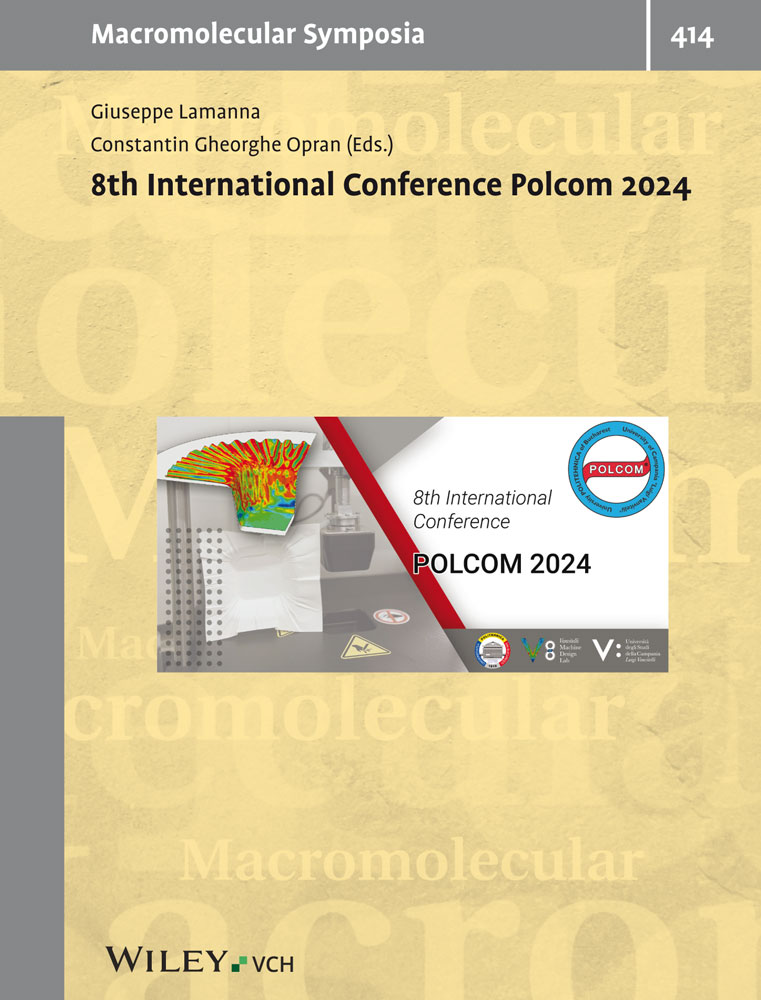Thermoreversible Gelation of Poly(vinylidene fluoride) – Camphor System
Abstract
Poly (vinylidene fluoride) (PVF2) produces thermoreversible gel in camphor when quenched to 25°C from the melt under sealed condition. The SEM micrograph of dried PVF2/camphor gel (Wequation/tex2gif-inf-3.gif= 0.25) indicates presence of fibrillar network structure and the gels at different composition shows reversible first order phase transition. The phase diagram of the gel suggest the formation of a polymer- solvent complex. The melting enthalpy gives a stoichiometric composition of the complex at Wequation/tex2gif-inf-5.gif= 0.25. This corresponds to a molar ratio of PVF2 monomer/camphor ≈ 4/5. Temperature-dependent synchroton experiments further support the conclusions derived from the phase diagram.




